How to Eliminate Clutter So You'll Love Your Space Again
If you're overwhelmed by too much stuff, we have your clutter solution. Use these 25 expert-approved strategies to defeat disorganization for good.
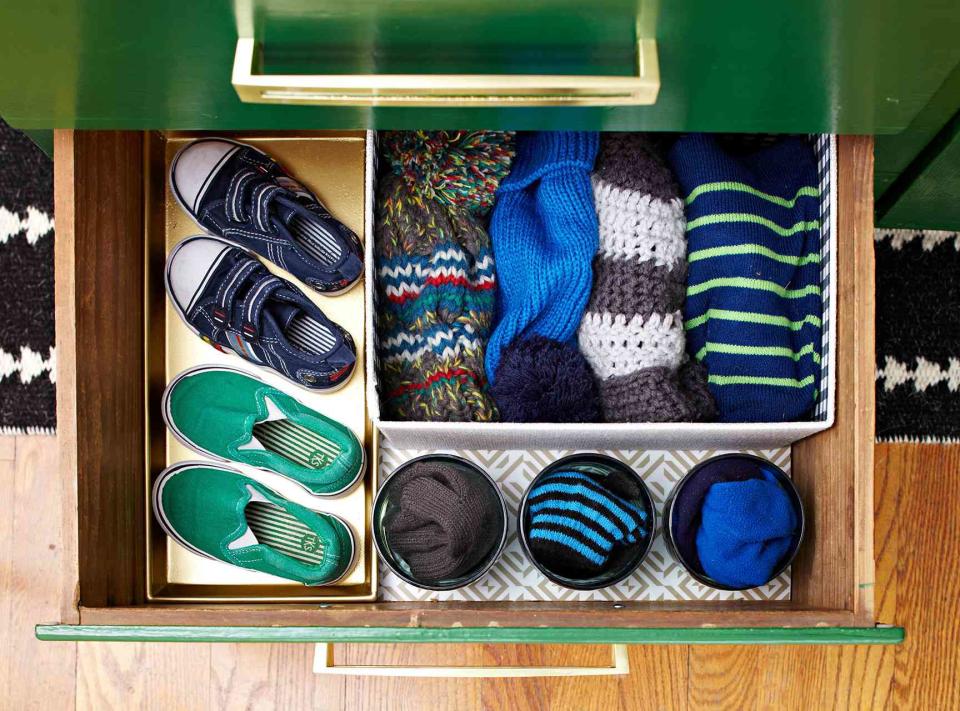
What do stacks of papers, kids' shoes, and a surplus of spatulas have in common? When you need them, they're useful—but when you don't, they're clutter. If you feel daunted by the chaos of too much stuff, don't fret, because we have your clutter solution. To help you solve your biggest storage issues, professional organizers and designers shared with us their favorite fixes for common household complaints. Use these 25 strategies to defeat disorganization for good.
Target Your Efforts
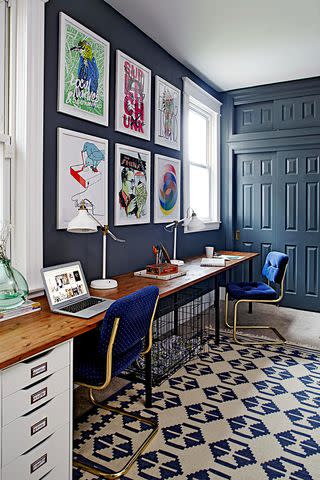
Problem: Your organization efforts don't seem to yield results.
Solution: Avoid zigzag organizing. Scattering your efforts over multiple rooms prevents you from seeing progress. For visible, dramatic results, work one room at a time, suggests Julie Morgenstern, author of Organizing from the Inside Out. As you tackle each room, restrict yourself to one section at a time, completing that area before moving on to the next.
Stow a Stool
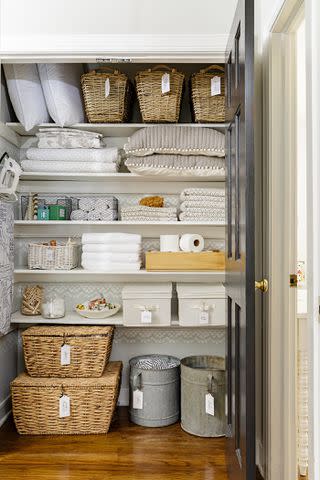
Problem: The top shelves of your closet are difficult to keep organized.
Solution: Slip a slim step stool inside the linen closet so you can easily access the top shelves, suggests Jamie Novak, a decluttering expert and author of Stop Throwing Money Away. If you can't reach the upper-shelf items, you most likely won't use them (or put them back properly if you do). Invest in a few baskets to stow up-top items, so you can pull down the container, rather than rifling overhead.
Help Your Kids Purge Toys
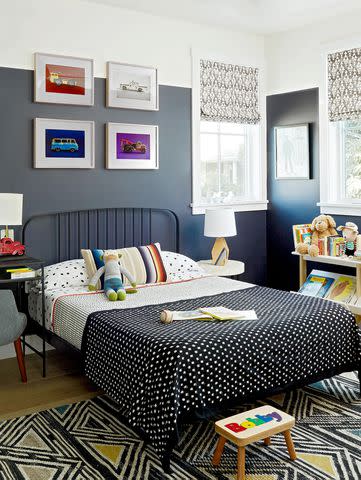
Problem: Generous gifting at holidays and birthdays overwhelms already-stretched storage.
Solution: Lorie Marrero, author of The Clutter Diet, suggests going through toys with your children before birthdays and holidays, deciding what can be donated or sold. Remind them that new gifts are on the way, so you need to make room (and share what you're not using anymore). Between holidays, set up a donation station for your kids to drop toys whenever they decide they're tired of them.
Befriend Clear Bins
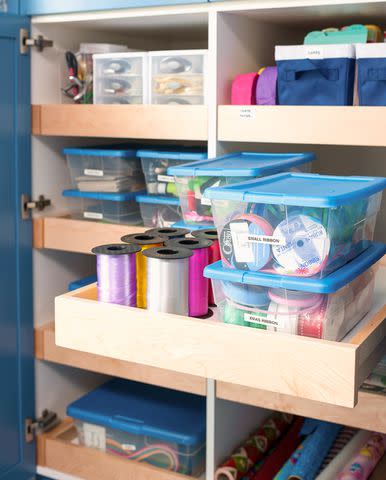
Problem: Household necessities are tricky to store and even trickier to find.
Solution: Stacey Platt, author of What's a Disorganized Person to Do?, suggests using stackable plastic drawers ($40, containerstore.com) to manage household supplies like lightbulbs, vacuum cleaner bags, and batteries. Choose clear bins so you can see the contents at a glance, and customize printable labels to streamline organization.
Stow Donations in the Trunk
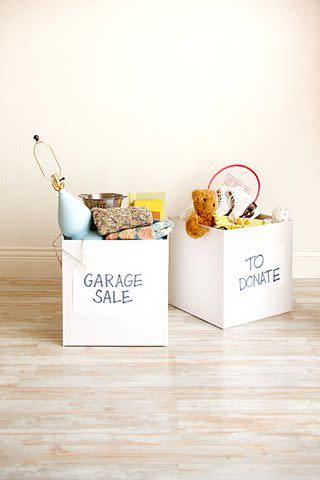
Problem: You set aside things for donation, but they never make it out the door.
Solution: If you fill a bag of items to donate, take it directly to your car, suggests Susan Pinsky, author of The Fast and Furious 5 Step Organization Solution. Otherwise, items waiting for the thrift-store bin tend to linger—and your good intentions become a mountain of clutter.
Clean Your Fridge on Trash Day

Problem: Your refrigerator is jampacked with food.
Solution: Hate finding moldy food at the back of the fridge? Use trash day as a reminder that it's time to clean out and organize your refrigerator, advises Marrero. That way, you'll toss any past-its-prime food before it starts stinking—and make room for new stuff to come in.
Anticipate Tax Season
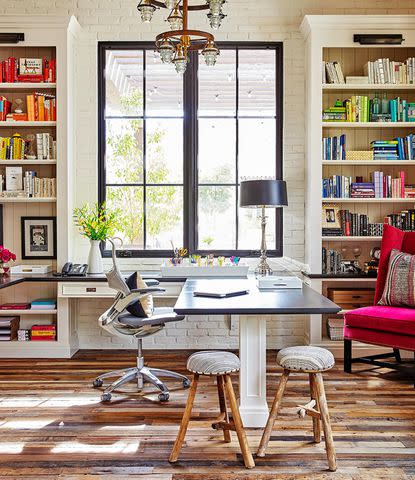
Problem: Tax season turns into a scavenger hunt for misplaced papers.
Solution: If you hate the annual April 15th scramble, keep a folder labeled "tax documents" where you sort your mail, suggests Meredith Schwartz of Penelope Loves Lists. As statements come in, slip them into the folder. Then when tax time comes, everything you need will be in one spot.
Set Decluttering Deadlines
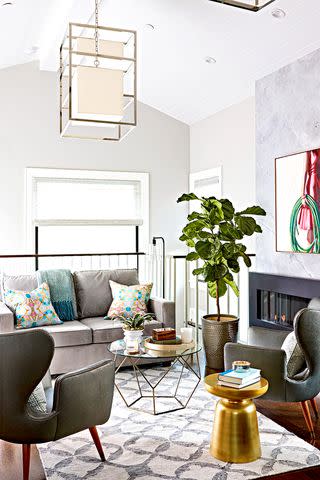
Problem: There's just too much clutter to tackle.
Solution: Come up with a plan—and a detailed timeline—for taking it one step at a time, advises professional organizer Kathy Jenkins. Break up each room into small areas you can tackle incrementally, setting achievable deadlines for what you'll accomplish when. Write down your plan, along with a list of what items have to stay and what you'd be willing to let go. If you feel daunted, focus on the why behind your decluttering, whether it's creating an orderly space for family gatherings or refreshing a guest room for visitors.
Recruit a Friend
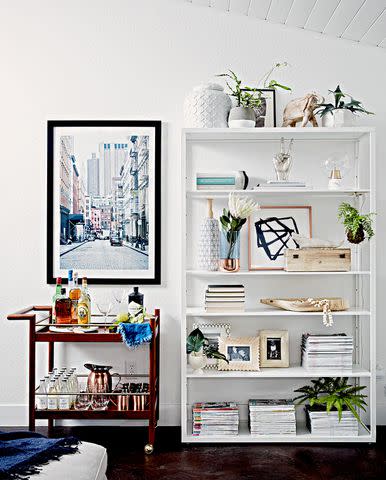
Problem: You have trouble parting with items that are sentimental or potentially useful in the future.
Solution: Only keep the things that really matter to you, that you actively use, and that you have the space to store, says Marrero. If you tend to think everything meets that criteria, ask a trusted friend to help you sort through memorabilia—and refocus you when you're tempted to flip through photo albums. Divide items into piles (for example, "Must Keep," "Maybe Keep," and "Donate"), and allow yourself time to make decisions about objects that have feelings attached to them. Aim to save only the most sentimental stuff, refusing to let grief or guilt convince you to hang onto things you don't really need.
Vary Your Closet Storage
Problem: Your closet is too small for your wardrobe and accessories.
Solution: If you've already purged your closet of the stuff you never wear, utilize a combination of shelving and baskets to tame closet clutter. When closet space is tight, using a variety of storage types can help you make the most of every inch.
Take a Flexible Approach
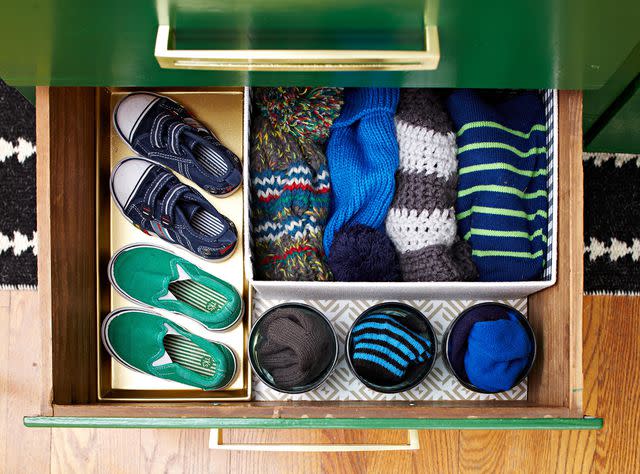
Problem: You think, "If I can't do it right, I won't do it at all."
Solution: Dive in and do the best you can with the time you have, while accepting that you may not be perfectly organized right away, says professional organizer A.J. Miller. Come up with a system that works for now, knowing you can tweak your approach later. The important thing is starting the process. That may mean tackling a small, manageable project first, such as straigthening a dresser drawer. Remember, prioritize progress over perfection.
Schedule Organization Time
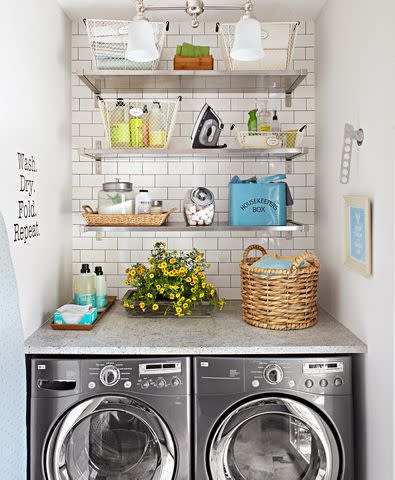
Problem: You're too busy to bother with organizing.
Solution: Commit time on your calendar—even if it's only small amounts—to decluttering. Professional organizer Connie Johnson suggests this strategy: Schedule 15 to 30 minutes of daily decluttering time, and play "beat the clock." See how many organizational tasks, such as sorting the mail, reorganizing a cupboard, or putting laundry away, you can complete within the allotted time. Knowing an end is in sight will make it easier to gain the momentum you need for a few tasks. If you find yourself forgetting, set an alarm on your phone or computer to remind you to complete a specific organizational task.
Pick a Decluttering Partner
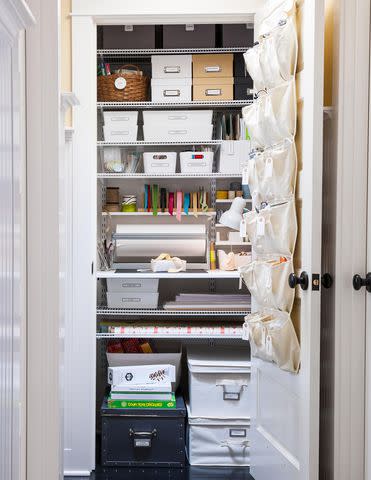
Problem: You don't have time or energy to complete an organizing task today, so you put it off until later.
Solution: If you've already created a plan, but find yourself skirting your decluttering duties, add a reward to the mix. (For example, treat yourself to a catnap after you clean, or buy a pretty desk organizer if you purge all those papers.) Marrero also suggests finding a motivation partner. Set a day and time each week to talk about what you want to accomplish and how you plan to do it. Being accountable to someone else—ideally, a friend with similar goals—is a powerful motivator.
Corral Everyday Items
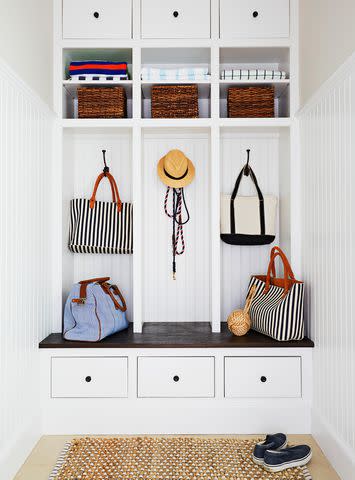
Problem: You waste precious time every morning running around the house looking for the items you need.
Solution: Professional organizer Amanda Catalanotto suggests using a "transfer basket" to gather everything that needs to go out the door the next day. Think library books, bills to mail, and schoolwork. Haul the basket to your car every morning, then bring it back into the house when errands are done.
Disguise the Clutter
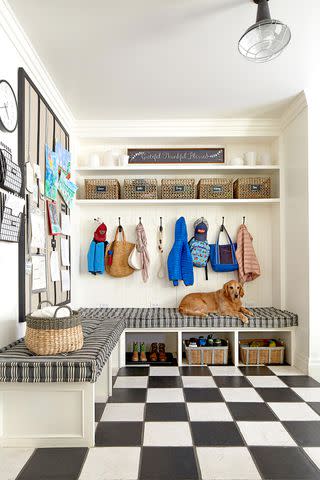
Problem: No matter how hard you try, your house never looks orderly.
Solution: You can't hide all clutter, but you can contain it, says Donna Smallin, author of The One-Minute Organizer: A to Z Storage Solutions. Identify the places where clutter collects and set up attractive ways to deal with it. Consider placing a bowl on the kitchen counter to collect keys or leaving a large basket by the door for shoes. Check discount or office supply stores for patterned folders for storing bills, and corral items inside wicker, fabric, or leather boxes that match your decor.
Tackle Tough Closets
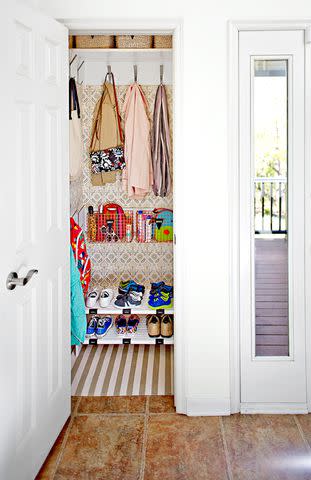
Problem: Your closets are overflowing with an unorganized mixture of household items.
Solution: Decide where to place items based on how often you need to access them. It makes sense to store yearbooks, kids' memorabilia, or once-a-year dishes, for example, on out-of-reach upper shelves, says professional organizer Marcia Ramsland. If you have multiple closets, group items according to purpose, and combine a variety of storage types for the most efficient use of space.
Create a Dinner Table Bin
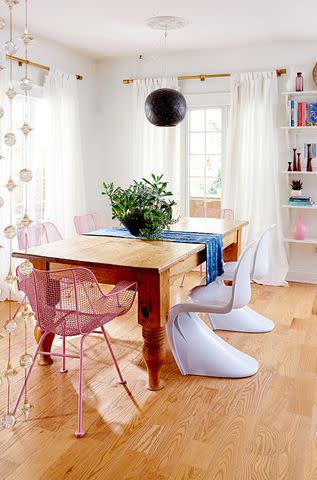
Problem: The dinner table is so cluttered, it's hard to find room for a plate.
Solution: The dining room table is often the place where family members spread out projects, acknowledges Meryl Starr, author of The Home Organizing Workbook. That doesn't have to change—but you do want to reclaim your dining space, too. Designate a bin for whatever tends to find a temporary home on the table. This can be used as permanent storage or a way to move things to their rightful room.
Look for Double-Duty Furniture
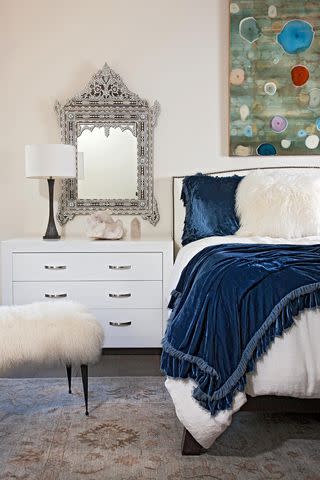
Problem: You have furniture, but you don't know how to optimize its storage capacity.
Solution: A nightstand with drawers can conceal bed-and-bath supplies, while a dining room console table can stow holiday dishes and seldom-used china. When you shop for new furniture, look for pieces with built-in storage, preferably with doors, suggests designer Andrew Flesher.
Transform Your Doors
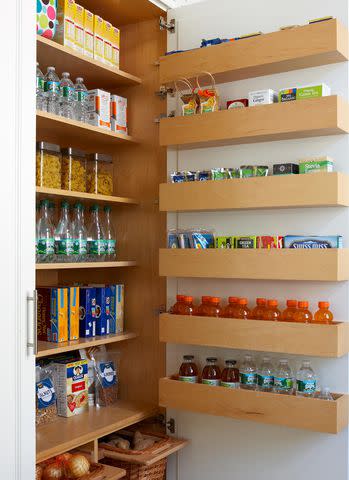
Problem: You don't have any extra drawers to allocate for a "junk" drawer.
Solution: Look to the backs of doors as hidden storage gems, suggests organizing expert Julie Morgenstern. Attach shallow shelving or bins behind the door to double the storage capacity of cabinets and closets. If you have the space, line unused interior walls of closets with narrow shelves and hooks for items such as cleaning supplies, tools, or pantry goods.
Search for Stowaway Spots
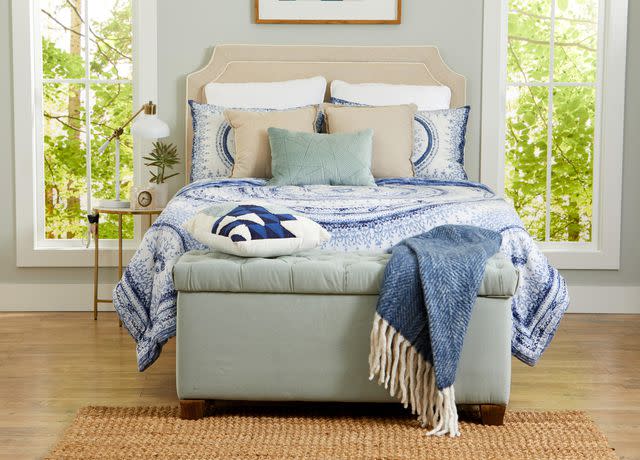
Problem: You're working with limited space.
Solution: There are the obvious storage pieces, like bookshelves and cabinets. Then are there the subtler options, like beds with drawers, ottomans with lift-off tops, or benches with cubbies underneath. Turn to these sorts of dual-duty pieces in smaller spaces, suggests design consultant Betsy Bruce. They don't detract from your design, but improve your storage efficiency.
Take Inventory
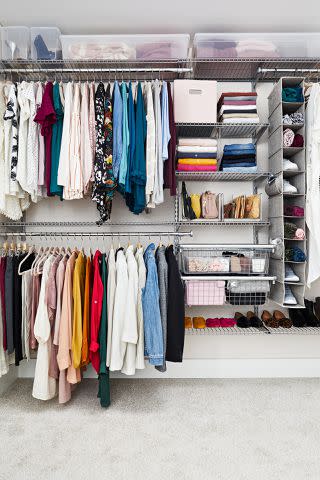
Problem: Your closet is overflowing, yet you still can't find anything to wear.
Solution: Purge your closet of items you no longer wear and donate them to a charitable organization. Need some help? Narrow down your wardrobe to three categories: clothes that fit you, clothes you love, and clothes that always bring you compliments, advises Peter Walsh, author of Does This Clutter Make My Butt Look Fat? Anything else can find a new home.
Shelf Solution
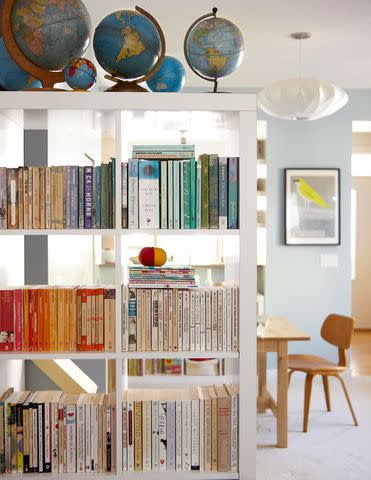
Problem: You need more vertical storage, but you lack wall space.
Solution: Create a functional room divider by placing bookshelves back to back, suggests professional organizer Nancy Peham. (Open-backed shelves are also an attractive option if you don't need the privacy.) Use these shelves as storage for collections, dishes, and, of course, books.
Step Up for Space
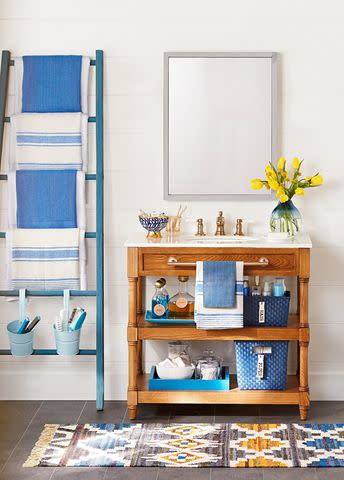
Problem: You have limited space in your bathroom, but you desperately need storage.
Solution: Repurpose an old wooden ladder as a rack for hanging towels, suggests designer Susan Jeffery Lepper. You can also use it to stash grooming essentials in small buckets with hooks. To make A-frame ladders stabler, drill holes in the side opposite the steps and add dowel rods, which make great display bars for hanging objects.
Involve the Kids
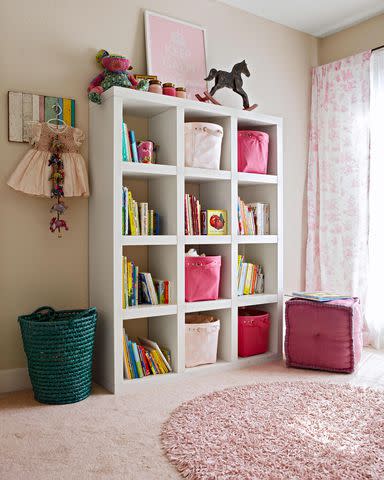
Problem: The kids' rooms are always a mess.
Solution: Make storage accessible for kids so they're more inclined to help clean up. Drawers and bins enable your little ones to easily put away stuffed animals, books, art supplies, and toys, says professional organizer Amanda Catalanotto. Keep these containers at their level—that way, they can easily access their favorite toys and put them away when they're done. Label everything so kids know where items should go.
Cut Crafts Clutter
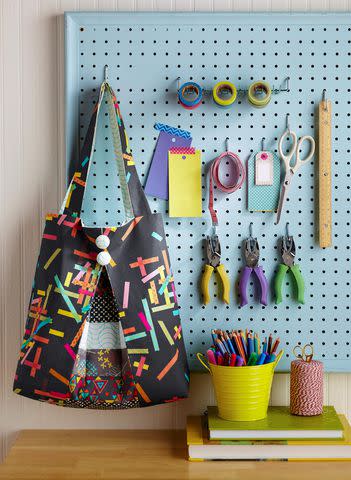
Problem: Your scissors and hole punches are taking over your craft room table.
Solution: If your crafting corner has become chaotic, designer Sy John Iverson suggests a variety of creative solutions: Keep scissors handy on hooks attached to a shelf or pegboard panel. Store wrapping paper rolls upright in an umbrella stand or wastebasket. Use fishing-tackle boxes to organize small loose items such as threads, buttons, beads, and scrapbook embellishments. Once you have a system for every supply, you'll find it easier to locate what you need.

